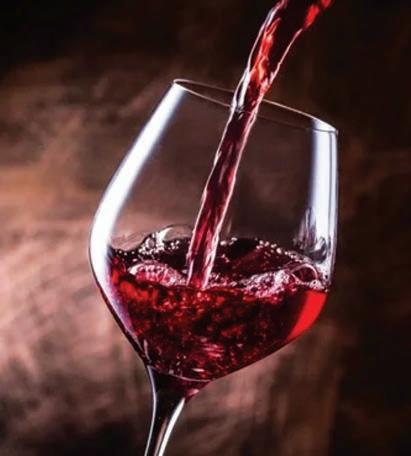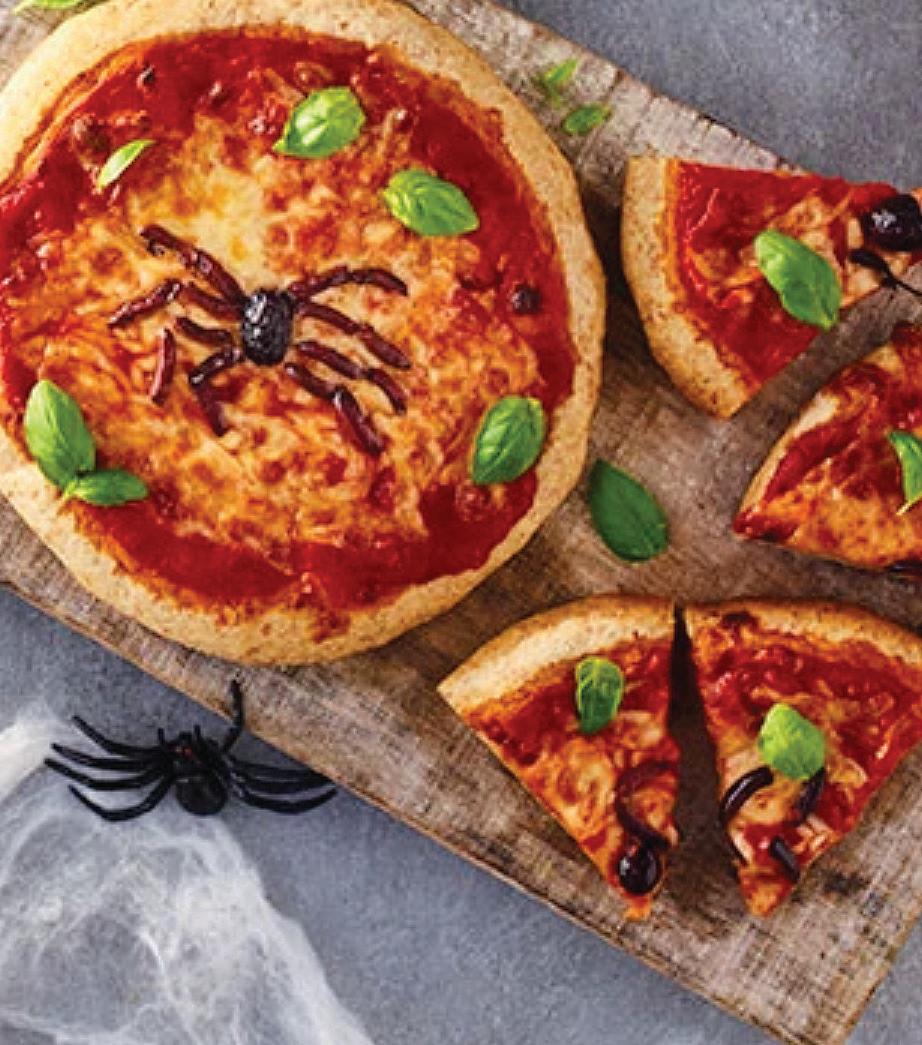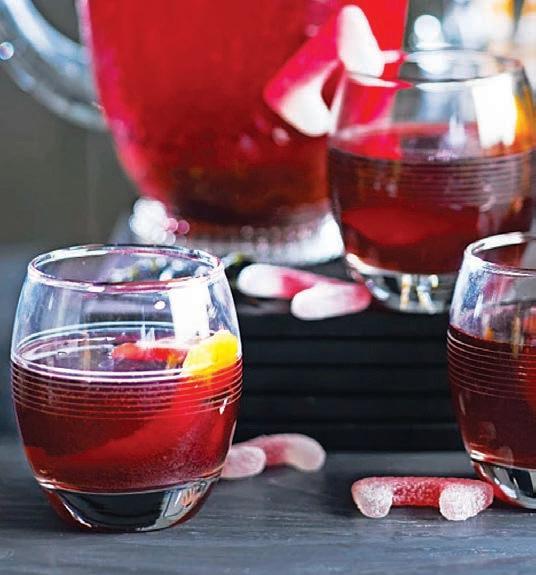
4 minute read
Food & Drink
Preparation and cooking time Prep: 20 mins Cook: 10 mins Serves: 4
Let little witches and wizards make their own healthy Halloween dinner with this pizza. You can add extra toppings, using whatever meat and veggies they like...
Advertisement
Ingredients
• 200g strong white our • 200g strong wholewheat our • 1 tsp or 7g sachet easy-blend dried yeast • 250ml warm water • For the topping • 300g passata • 1 garlic clove, crushed • 1 tbsp olive or rapeseed oil • 75g grated mozzarella • 10 black olives • handful cherry tomatoes , halved • handful basil leaves, to serve

Me Come Dine With Healthy Halloween pizzas with a pinch of salt in a food processor tted with a dough blade, or combine in a bowl. Pour in the water and mix to a soft dough, then work for 1 min in a processor or 5 mins by hand. Remove the dough, divide into 4 pieces and roll out on a lightly oured surface to rounds about 15cm across. Lift onto heavily oiled baking sheets.
STEP 2
Mix the passata with the garlic, oil and a little seasoning. Spread over the dough to within 2cm of the edges. Scatter with the mozzarella. Halve the olives and tomatoes. Place an olive in the centre of each pizza to make the spider’s body. Cut the rest into little legs and arrange them around the spider bodies. Dot the tomatoes here and there. Leave to rise for 20 mins. Heat oven to 240C/ fan 220C/gas 9 or the highest setting.
STEP 3
Bake the pizza for 10-12 mins until crisp and golden around the edges. Scatter with the basil to serve.

Method STEP 1
Mix the ours and yeast


Halloween punch

Make a mocktail for your Halloween party using cherry juice, chilli, cinnamon and ginger, then garnish with edible fangs. Add vodka for those who prefer it
Ingredients
• 2l cherry juice • peel from 3 oranges , pared with a vegetable peeler • 1 thumb-sized red chilli , pierced a few times but left whole • 3 cinnamon sticks • 10 cloves • 6 slices ginger • Dracula’s fangs sweets (available from sweet shops), to serve, optional • 200ml vodka , or 25ml per glass
Method STEP 1
Tip the cherry juice, orange peel, chilli, cinnamon sticks, cloves and ginger into a large saucepan. Simmer for 5 mins, then turn o the heat. Leave to cool, then chill for at least 4 hrs, or up to 2 days – the longer you leave it the more intense the avours. If serving to young children, take the chilli out after a few hours.

STEP 2
When you’re ready to serve, pour the juice into a jug. Serve in glass bottles or glasses and pop a straw in each. If you’re adding vodka, do so at this stage. Dangle a fangs sweet from each glass.
Your Wine Glossary Final Part
Residual Sugar (RS)
e amount of sugar remaining in a wine that has not been converted into ALCOHOL when FERMENTATION stops. Less than 2g/l is imperceptible. Some sweet wines will have upwards of 25g/l.
Solera
A system of fractional blending that gives Sherry its character. A complex process by which several vintages are blended together over many years in a building known as a Solera, before bottling.
Structure
Tasting term. To describe a wine as “wellstructured” is very complimentary. It means it has an “architecture” of fruit, ACIDITY, ALCOHOL and TANNINS, that should allow it to age and stop it from being bland or wishy-washy.
Sulphur Dioxide
An important and age-old additive in winemaking. Sulphur is an antiseptic and antioxidant. If used correctly it should be imperceptible.
Super-Tuscans
Ground breaking Italian wines that deliberately ignored local wine laws to make premium wines using outlawed “international” grapes like Cabernet Sauvignon and Merlot.
Tannin
A naturally occurring chemical that helps to preserve red wine and adds a savoury edge to the avour. Tannins are present in grape stems, pips and skins. Tannin also comes from oak ageing of wine. As the grape ripens on the vine so do tannins, making them less astringent. Bottle age also lessens tannins, which will eventually precipitate as sediment.
Un ltered Wine
Wine that has been bottled without ltration. Fashionable in quality wines, it avoids a process which many believe strips wine of some avour and complexity.
Varietal Labelling
e practice of naming the grape or grapes on the label – still uncommon in classic European regions, adopted widely elsewhere over the past 20 years.
Vitis Vinifera
e wine vine. Almost all important wines are made from this species.
Volatile Acidity (VA)
Tasting terms that wine bores often trot out to impress. A real fault however, ranging from a vaguely sharp smell, to a horrible vinegar aroma and taste. Caused by bacterial infection, especially of acetobacter (acetic acid).
Yeast
Other than grapes, the essential element in FERMENTATION. Yeast is a single-cell organism that is naturally present on the surface of grapes, but in commercial winemaking is more likely to be laboratory-grown. It devours grape sugar, converting it into Ethanol (ALCOHOL).










